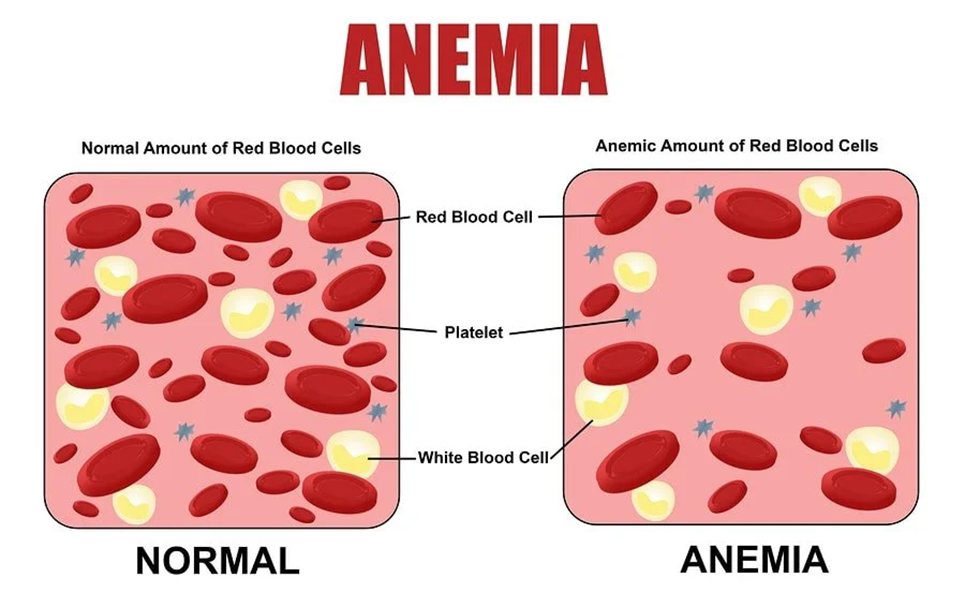Which of the following is included in the management of hemarthrosis in a child with hemophilia A?
Keep affected extremity below the level of the heart
Use of topical analgesic cream on the painful area
Instructing the parent to call their health care provider to obtain a plan of care
Prompt infusion of Factor VIII
The Correct Answer is D
Choice A reason:
Keeping the affected extremity below the level of the heart is not recommended in the management of hemarthrosis in a child with hemophilia A. Elevating the affected limb can help reduce swelling and pain by promoting venous return and decreasing pressure in the joint.
Choice B Reason:
The use of topical analgesic cream on the painful area is not a primary treatment for hemarthrosis in hemophilia A. While it may provide some temporary relief, it does not address the underlying issue of bleeding within the joint. The primary treatment involves replacing the missing clotting factor.
Choice C Reason:
Instructing the parent to call their health care provider to obtain a plan of care is important, but it is not the immediate management step for hemarthrosis. Prompt treatment with clotting factor replacement is crucial to stop the bleeding and prevent joint damage.
Choice D Reason:
Prompt infusion of Factor VIII is the primary treatment for hemarthrosis in a child with hemophilia A. This treatment helps to replace the missing clotting factor, stop the bleeding, and prevent further joint damage. Early intervention is essential to minimize complications and promote healing.

Nursing Test Bank
Naxlex Comprehensive Predictor Exams
Related Questions
Correct Answer is D
Explanation
Choice A reason:
Peanuts are not recommended for infants, especially those under one year of age, due to the risk of choking and potential allergies. Additionally, peanuts are not a significant source of iron and would not be effective in preventing iron deficiency anemia in infants. Therefore, this choice is not appropriate for preventing iron deficiency anemia in a 6-month-old infant.
Choice B reason:
Iron (ferrous sulfate) tablets are not typically recommended for infants unless prescribed by a healthcare provider. Infants who are exclusively breastfed or partially breastfed should receive iron supplementation starting at 4-6 months of age, but this is usually in the form of liquid drops rather than tablets. It is important to follow the guidance of a healthcare provider when administering iron supplements to infants.
Choice C reason:
Sautéed liver is a rich source of iron, but it is not suitable for a 6-month-old infant. Introducing solid foods to infants should be done gradually, starting with iron-fortified cereals and pureed fruits and vegetables. Liver can be introduced later as part of a balanced diet, but it is not the first choice for preventing iron deficiency anemia in a young infant.
Choice D reason:
Iron-fortified baby cereal is the recommended choice for preventing iron deficiency anemia in a 6-month-old infant who is still breastfeeding. These cereals are specifically designed to provide the necessary iron that infants need as they transition to solid foods. Starting with iron-fortified cereals helps ensure that the infant receives adequate iron to support healthy growth and development.

Correct Answer is D
Explanation
Choice A reason:
Feeding an infant with gastroesophageal reflux formula instead of breast milk is not necessary. Breast milk is often easier for infants to digest and can be beneficial for reducing reflux symptoms. According to the American Academy of Pediatrics, breastfeeding should be continued if possible, as it has numerous health benefits for both the infant and the mother. If formula feeding is necessary, specialized formulas designed for infants with reflux can be used, but this does not mean breast milk should be avoided.
Choice B reason:
Thinning the baby’s formula with water is not recommended. This practice can dilute the essential nutrients in the formula, leading to inadequate nutrition for the infant. Instead, thickening agents such as rice cereal can be added to the formula to help reduce reflux symptoms. This approach helps the formula stay down in the stomach and reduces the likelihood of regurgitation.
Choice C reason:
Positioning the baby side-lying during sleep is not recommended for infants with gastroesophageal reflux. The American Academy of Pediatrics advises that infants should be placed on their backs to sleep to reduce the risk of sudden infant death syndrome (SIDS). Side-lying or prone positions are not safe for sleep and do not effectively reduce reflux symptoms.
Choice D reason:
Keeping the baby in an upright position after feedings is the correct approach for managing gastroesophageal reflux. This position helps prevent the stomach contents from flowing back into the esophagus, reducing the likelihood of reflux. It is recommended to hold the baby upright for at least 20-30 minutes after feeding to allow gravity to assist in keeping the stomach contents down.
Whether you are a student looking to ace your exams or a practicing nurse seeking to enhance your expertise , our nursing education contents will empower you with the confidence and competence to make a difference in the lives of patients and become a respected leader in the healthcare field.
Visit Naxlex, invest in your future and unlock endless possibilities with our unparalleled nursing education contents today
Report Wrong Answer on the Current Question
Do you disagree with the answer? If yes, what is your expected answer? Explain.
Kindly be descriptive with the issue you are facing.
